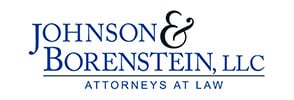Suppose you hold a mortgage on a property. There is no term or maturity date in the mortgage; however, the mortgage references the date in the corresponding note on which the underlying debt is due. How long do you, the mortgagee, have to foreclose on the property under the mortgage? Today, the Supreme Judicial Court issued a decision addressing this somewhat unusual factual situation.
In Deutsche Bank National Trust Co. v. Fitchburg Capital, LLC (SJC 11756) (April 15, 2015), the SJC decided that the Obsolete Mortgage Act, G. L. c. 260, § 33, as amended by St. 2006, c. 63, § 6, operates to discharge such a mortgage by operation of law five years after the date by which the underlying debt is due, unless the mortgage is foreclosed upon or an extension or acknowledgment of the mortgage filed. The Obsolete Mortgage Act created a limitations period for bringing foreclosure actions against mortgages: five years for mortgages with a maturity date (the date when a debt falls due) and thirty-five years from recording for mortgages with no maturity date.
Fitchburg Capital, LLC held two mortgages on the property: one dated 1999 referencing a note with a maturity date in 2000, and one dated 2002 referencing a note with a maturity date in 2003. Fitchburg Capital foreclosed on the mortgages in 2012. Deutsche Bank held a third mortgage on the property, and sought a declaration that the Fitchburg Capital foreclosures were void because the mortgages were voided by operation of law under the Obsolete Mortgage Act in 2005 and 2008, respectively, well before the 2012 foreclosure. Fitchburg Capital argued that lack of an expressly contained “term or maturity date” of the mortgages meant that the mortgages were subject to the extended thirty-five years-from-recording obsolescence date, and therefore the foreclosure was valid.
Affirming the Land Court’s decision on a motion for partial summary judgment in favor of Deutsche Bank, Deutsche Bank Nat’l Trust Co. v. Fitchburg Capital, LLC, 21 LCR 599 (2013), the SJC held that the term or maturity date of an underlying obligation, when stated on the face of the mortgage, can become the term or maturity date of the mortgage. The SJC then held that the two mortgages held by Fitchburg Capital were subject to the five-year limit, became void by operation of law prior to the 2012 foreclosure, and that therefore the foreclosure was invalid.
Fitchburg Capital also argued that the inclusion of a dragnet clause in one mortgage saved the mortgage as it indicated that the parties intended the mortgage to outlive the underlying note for an indefinite duration, thereby rendering the foreclosure on that mortgage valid. The SJC kicked the proverbial can down the road, and stated “Without holding that a dragnet clause may never extend the term or maturity date of a mortgage, we conclude that the dragnet clause here did not extend the term of the [] mortgage or take that mortgage out of the realm of mortgages in which the term is stated.”
The SJC also rejected Fitchburg Capital’s constitutional challenge to the Obsolete Mortgage Act, and determined that the retroactive application of the Act was constitutional because the Legislature had provided adequate time after amendment in 2006 for mortgagees to record extensions or acknowledgments to secure unsatisfied debts.
While presenting an infrequent fact pattern, this case provides valuable information for those drafting mortgages with an intention that they remain valid for an extended period of time. In order for the extended thirty-five year period to apply, not only must there be no maturity date in the mortgage itself, the maturity date of the underlying debt must not appear on the face of the mortgage document. Otherwise, a mortgagee who forecloses outside the five-year period will likely find itself holding an unsecured debt after the foreclosure is declared invalid, a less-than-ideal situation for any creditor.
Read the full decision here.

